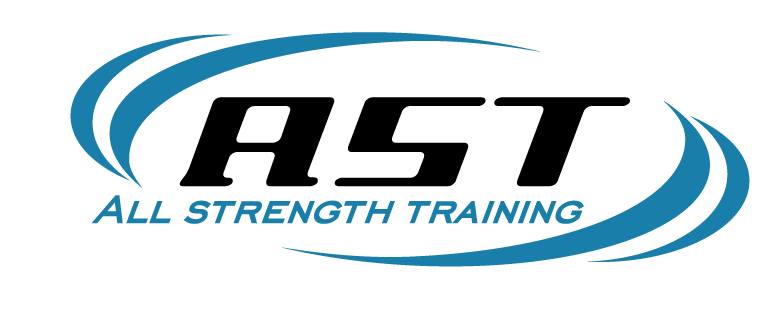Knee Pain Part 1: You’re Doing It Wrong

Knee pain seems to be far and away the most prevalent nagging, reoccurring injury in recreational athletes and trainees that I have worked with, probably more than lower back and shoulder issues combined. There are a few reasons for this.
First, there is a trend of promoting “knee-friendly” training routines in fitness magazines and blogs, including exercises such as partial squats, Smith machine squats, leg presses (partial range), and leg extensions. The problem with this is that in reality, most of those exercises do more harm than good, for a variety of reasons. Let’s break it down.
Partial Squats
Partial squats – a barbell squat to no more than 90 degrees. Two problems here – the first is that you are shortening the range of motion, which essentially puts more demand on the thigh muscles to decelerate the weight faster because of the shortened movement. Here’s a good analogy – would you rather have 1000 feet to brake from 75 miles an hour, or 500 feet? Your brakes are working a lot harder to slow down a ton of weight (it doesn’t help that most people can squat up to 2 or 3 times as much weight in a partial squat vs. a full range squat).
The second downside is that the vastus medius oblique, or VMO, which is your knee’s major stabilizer, is most active during both the first 15 degrees and last 15 degrees of a squat. It is least active at or just above parallel. So you’re using more weight, requiring more work from your joints, without the help of the muscle designed to keep the knee safe.
The answer here is just to squat through a full range of motion. Ideally, a squat should be below parallel, with the hamstrings making contact with the upper part of the gastrocnemius (upper calf). In conjunction, the lowering stage of the squat should be performed under control, taking three or four seconds to lower the weight, and the overall load should be reduced to ensure correct technique.
Smith Machine Squats
Smith machine squats are usually the quickest substitute for conventional barbell squats that you’ll see recommended in training articles. “Oh, your knees hurt? Okay, squat on this”. If you’re not familiar with a Smith machine, it is essentially a barbell set on two guided supports that allows the bar to move in a single plane of motion – straight up and straight down.

A major problem here is that when you squat, you don’t only go straight up and down, there is horizontal movement of both the hips and the barbell, so having the “safety supports” inhibits the natural mechanics of the movement and actually places significantly more shearing stress on the patella (kneecap) than a conventional squat performed correctly. And again, as with partial squats, the leverage you gain from the machine usually encourages more load on the bar, making things even worse.
Leg Press
Truth be told, there’s nothing inherently wrong with the leg press. In fact, for bodybuilders and those only interested in looks, it’s a solid leg exercise, when done right. However, most of the time you’ll see people going through an incredibly shallow range of motion with far too much weight. The problems and resolutions are essentially the same as for the barbell squat.
Leg Extension
The leg extension is a bit of a different beast than the others. Its primary function is indeed to strengthen the VMO, which, as mentioned earlier, is one of the main ways to stabilize the knee. So what’s wrong with the leg extension?
First, the leg extension is what’s known as an open kinetic chain exercise, meaning the foot isn’t stabilized and the stress isn’t applied the same as a squat or leg press. The issue with that is that the angle of pressure from the shin pad can create undue stress at the knee joint, so while it’s sometimes a useful exercise for developing the VMO, the trade-off is that it can inherently damage the joint.
The other problem is that I have had problems fixing poor motor patterns with people who have done a lot of leg extensions in their training lifetime. What does that mean? It means that the leg extension conditions the muscle to fire exclusive of any other thigh muscles, so the body gets strong operating in isolation. But when an individual begins squatting or lunging, they can’t apply that leg extension strength to the new movement, putting them at a disadvantage again.
So What Do I Do?
In the next part of this article, I will go over what changes to make to your leg training to spare your knees, as well as why all the training in the world may not save you from knee pain if you neglect these other variables.

Hi Zach,
I’m looking for Part 2 but can’t find it! Does it exist, or can you point me to another article which covers the best way to get back to squatting after suffering knee pain (from going ATG too heavy before I was ready)? Know my knee is sensitive and gets sore under the patella relatively easy, which limits my activity. Thanks!
Great article! This breakdown of common mistakes contributing to knee pain is incredibly insightful. I especially appreciate the emphasis on proper movement patterns and strengthening exercises to support knee health. It’s often overlooked how much our daily habits and exercise routines impact our joints. I’ve noticed a significant improvement in my own knee stability since incorporating these adjustments.
Also, for anyone dealing with knee pain, using high-quality athletic tape can make a big difference. Hampton Adams’ tape has been a game-changer for me in providing the support and stability needed during workouts. Looking forward to reading Part 2!